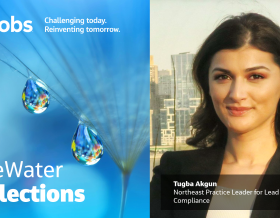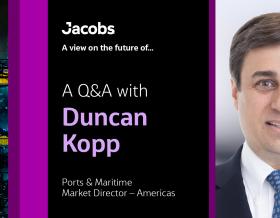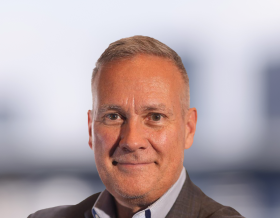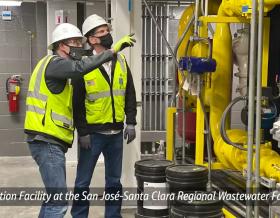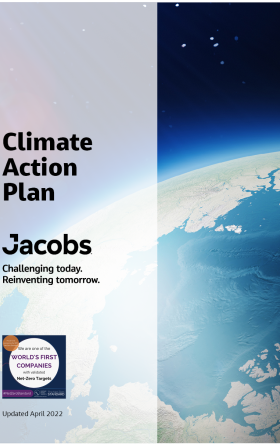
Tell us about your role and how it’s helping us deliver more for our clients
Success in major programs is heavily influenced by behaviors and relationships. I tend to focus on achieving better program outcomes by empowering our leaders, upskilling our talent, improving our processes and building closer partnerships throughout the ecosystem — especially within the supply chain. This all happens within a long-term strategic view as part of portfolio management. By developing learning cultures that foster best practice across a portfolio, we ensure opportunities are maximized and we consistently deliver the highest-quality product for the client.
At Jacobs, we leverage our unique combination of global talent, delivery expertise and the latest technology to meet project needs. I’ve had the privilege of managing teams on several ambitious, innovative programs like the Anglian Water @One Alliance, Crossrail and East Coast Mainline Power Upgrade, along with many others across diverse sectors. This variety has meant I could take learnings from one sector and apply them to other industries, whether it’s a technology, like using lasers from the nuclear sector for faster, more effective measurement on iron ore mines, or a product, like a blast furnace cap we took from the mining sector to revolutionize the iron and steel production process. That’s one of the benefits of working in a wide variety of roles and sectors from the age of 16.
How do you help clients think differently about their programs?
Our program management approach integrates seamlessly with Jacobs’ relationship-based model. We bring in proven processes, leading technology and top-tier talent. We’re not transactional—we pride ourselves on earning repeat business and building career-long relationships with clients and program partners. This approach allows us to make the greatest impact through our portfolio management by leveraging global innovation and ways of working from our industry-leading colleagues worldwide. The water sector is a prime example: our water treatment work in Europe benefits from lessons learned in the U.S. and Asia.
As a program person, it gives me so much comfort as we combine global best practices with highly experienced program management teams. When I first took over major programs, I blended Jacobs’ signature relationship-based with the rigor and discipline of a structured program management system, creating an approach called "Setup for Success."
How did you create this signature program management system?
We analyzed the major program industry over the past 15 years and then laser-focused in on the most distressed projects. Our deep dive into data and costs revealed that nearly 60% of issues stem from mistakes in the program setup. That was a lightbulb moment for me — it underlined how prevention is far easier and cheaper than fixing complex problems later. One of the best lessons I learned as chief operating officer seconded to Scottish Water Solutions was that you can’t “March and Fight” simultaneously. The same applies to programs: the pressure to mobilize faster means you don’t set up properly as you rush to produce deliverables or issue procedures, and then you’re stuck in a vicious cycle. The lack of a complete planning ecosystem at the start will cause problems and hamper progress later. It puts you in a constant fighting mode to fix the symptoms of structural issues created at the start.
Another key influence was thanks to a fascinating visit to a Jaguar factory producing high-performance saloon cars. The Jaguar team emphasized that identifying lessons isn’t enough—if you don't operationalize and apply them, you’ll keep repeating the same mistakes. As a result, our “Setup for Success” approach embeds lessons from more than 200 major programs globally, reducing reliance on individual ability and actions and instead providing a structured blueprint for program setup, vision and ecosystem. This foundation ensures stronger, more resilient major programs.
How do you build a culture of innovation in major programs?
It starts with the right mix of people and an environment that enables their success. When I was in my first project management role around the age of 25, I worked with an incredibly talented project manager with more than 40 years of experience. He commanded deep respect from everyone around him. When he retired, I asked him for the secrets to his success. He said there are only two rules to management. The first and most important one is to surround yourself with the best people. Set their boundaries; they’ll do the rest.
The second rule is to keep them happy — that’s it. I've applied this philosophy throughout my career, including now, where I manage programs worth hundreds of billions. I can’t manage that scale alone, but I can build a team that can. Success comes from finding and developing great people and placing them in the right roles. These leaders, in turn, set the tone and culture by inspiring and empowering their teams. Watching them excel is the most satisfying part of my job.
Creating the right environment also means defining motivations that drive innovation. One of the most valuable lessons I learned came from working with a leading utility in the water sector. They restructured contracts with the supply chain to encourage the right behavior rather than letting contracts dictate the behavior. Partners must be incentivized to experiment and innovate, rather than being penalized for first-time performance issues, which often drive a conservative culture. This behavioral-based contracting approach carefully balances risk and reward to foster innovation without excessive risk-taking.
By applying these principles, we create major programs that are not only effective, but also serve as benchmarks for the future of program delivery.
About the interviewee

James Hampson has more than 33 years of experience in managing global major programs and projects. His career has included a $250 billion portfolio of iconic programs such as Crossrail, East West Rail, Tideway, Anglian Water Strategic Pipeline Alliance, TEAM2100, Suedlink, Ellinikon Redevelopment, Palace of Westminster and Lower Thames Crossing. James has been instrumental in bringing innovation to the markets he has worked in, including iron and steel, mining, nuclear, power, aviation, rail, battery factories, highways and building restoration industries. His leadership has been pivotal in fostering young talent and promoting inclusivity within the construction sector.











